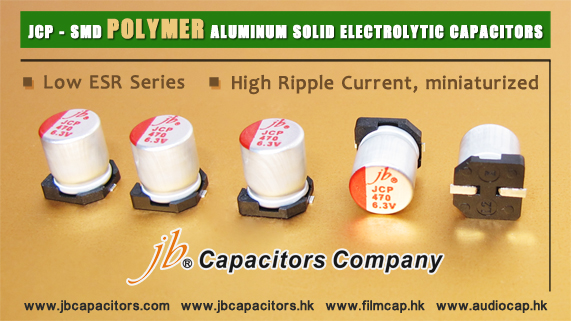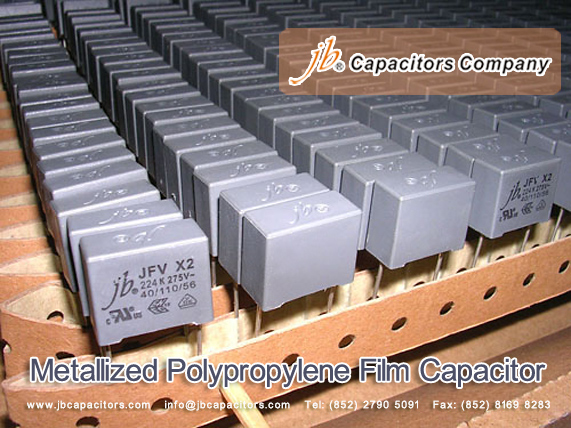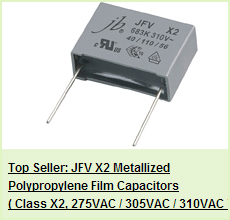jb Launched JCP Series SMD Conductive Polymer Aluminum Solid Electrolytic Capacitors
JCP Series is another Polymer Aluminum Solid Electrolytic Capacitors with surface mount type. With stable temperature and load life characteristics, JCP series have excellent performance in ripple absorption, smoothing and transient response suitable for numerous applications.
Electrical Characteristics Comparison of Capacitors
| Species/Type | High Frequency | Temperature | Allowable Ripple | Miniaturized |
| Aluminum Electrolytic capacitor | « | « | «« | ««« |
| MLCC | ««« | « | — | «« |
| Film Capacitor | ««« | ««« | — | « |
| Tantalum Capacitors | «« | «« | « | «« |
| JCP(Conductive Polymer Aluminum Electrolytic Capacitors) | ««« | ««« | ««« | «« |
| ««« Superior | ««Ordinary | «Inferior |




